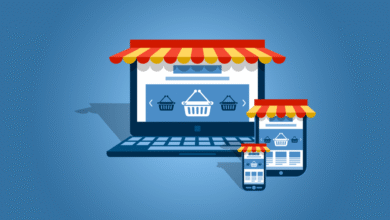
In today’s digital age, social media has become an integral part of our lives. It has transformed the way we communicate, share information, and connect with others. However, along with its numerous benefits, social media also brings about several cybersecurity challenges. In this article, we will explore the impact of social media on cybersecurity, highlighting the threats it poses and discussing best practices to mitigate those risks.
Read More: Cybersecurity Threats to the Financial Industry and How to Prevent Them
Introduction to Social Media and Cybersecurity
Social media platforms have gained immense popularity over the past decade, allowing individuals and businesses to interact, share content, and build communities online. At the same time, cybersecurity has emerged as a critical concern, given the increasing frequency and sophistication of cyber threats. Cybersecurity refers to the practices and measures taken to protect digital systems, networks, and data from unauthorized access, theft, and damage. It encompasses various aspects, including data privacy, network security, and user protection.
The Interplay between Social Media and Cybersecurity
The rise of social media platforms has revolutionized the way people communicate and share information. However, this rapid growth has also exposed vulnerabilities in social media networks, making them attractive targets for cybercriminals. Social media platforms often collect vast amounts of personal information, making them prime targets for data breaches and identity theft. Additionally, the interconnected nature of social media allows the malware to spread rapidly, posing significant risks to users’ devices and data.
Threats Posed by Social Media to Cybersecurity

Social engineering attacks
Social media provides cyber criminals with a wealth of personal information about individuals, making it easier for them to craft convincing phishing emails or messages. Social engineering attacks rely on psychological manipulation to deceive users into revealing sensitive information or performing actions that compromise their security.
Phishing and identity theft
Cybercriminals often use social media as a platform to launch phishing attacks, where they impersonate legitimate individuals or organizations to trick users into sharing sensitive information such as passwords or financial details. This information is then used for identity theft or other malicious activities.
Malware distribution through social media
Social media platforms are commonly used to distribute malware through malicious links or attachments. Clicking on such links can lead to the installation of malware on the user’s device, allowing attackers to gain unauthorized access or control over the system.
Data breaches and privacy concerns
Social media platforms store vast amounts of personal information, making them attractive targets for hackers. Data breaches can result in the exposure of sensitive user data, including names, addresses, and even financial information. Privacy concerns arise when social media platforms collect and utilize user data without explicit consent or proper security measures.
Best Practices for Enhancing Cybersecurity on Social Media
To safeguard your online presence and protect yourself from social media threats, it is essential to follow best practices for cybersecurity. Here are some recommendations:
Strong and unique passwords
Create strong passwords that are difficult to guess and avoid reusing passwords across multiple platforms. Consider using a password manager to securely store and manage your passwords.
Multi-factor authentication
Enable multi-factor authentication whenever possible. This adds an extra layer of security by requiring a second verification step, such as a fingerprint scan or a unique code sent to your mobile device.
Privacy settings and sharing controls
Review and adjust your privacy settings on social media platforms to limit the information visible to others. Be cautious about sharing personal details and restrict access to your posts and profile.
Regular software updates
Keep your devices, operating systems, and applications up to date with the latest security patches. Updates often include fixes for known vulnerabilities, ensuring that you are protected against potential threats.
Awareness of social engineering tactics
Stay informed about common social engineering techniques, such as phishing emails, suspicious links, or requests for personal information. Be cautious when interacting with unknown individuals or organizations online.
Educating Users about Cybersecurity on Social Media
While following best practices is crucial, it is equally important to educate users about cybersecurity on social media. Increased user awareness can significantly reduce the risks associated with social media usage. Here are some ways to promote user education:
Importance of user awareness
Emphasize the significance of cybersecurity awareness and educate users about the potential risks and consequences of negligent online behaviour.
Cybersecurity training and education initiatives
Organizations, educational institutions, and social media platforms should offer cybersecurity training programs to help users understand the threats and best practices for staying safe online.
Encouraging responsible social media behaviour
Promote responsible social media behaviour by discouraging oversharing of personal information and advocating for critical thinking when engaging with online content.
Reporting suspicious activities
Encourage users to report suspicious activities, such as phishing attempts or fraudulent accounts, to social media platforms or appropriate authorities. Reporting helps in mitigating risks for the wider community.
Collaborative Efforts for Social Media Security
Ensuring social media security requires collaborative efforts from various stakeholders. Here are some key players involved in enhancing cybersecurity on social media:
Role of social media platforms
Social media platforms have a responsibility to implement robust security measures, including encryption, secure authentication protocols, and proactive monitoring of user activities. They should also prioritize user privacy and provide clear guidelines for reporting and addressing security concerns.
Government regulations and policies
Governments play a crucial role in establishing regulations and policies to protect users’ cybersecurity on social media. These regulations may include data protection laws, cybersecurity standards, and penalties for non-compliance.
Partnerships between organizations
Collaboration between social media platforms, cybersecurity firms, and other relevant organizations can help share knowledge, resources, and best practices to address emerging threats effectively.
The Future of Social Media and Cybersecurity

As technology continues to evolve, so do the threats and challenges in the realm of social media cybersecurity. Here are some aspects to consider:
Evolving threats and challenges
Cybercriminals are continually adapting their tactics to exploit new vulnerabilities and bypass security measures. Social media platforms must stay ahead of these evolving threats by implementing advanced security measures and continuously updating their systems.
Advancements in cybersecurity technology
The field of cybersecurity is constantly evolving, and advancements in technologies like artificial intelligence (AI) and machine learning (ML) can help detect and mitigate cyber threats more effectively. These technologies can enhance anomaly detection, identify suspicious activities, and provide real-time threat intelligence.
User responsibility and vigilance
While social media platforms and technology can provide security measures, users also have a responsibility to stay informed, follow best practices, and exercise caution when using social media. Cybersecurity is a shared responsibility between the platform providers and the users themselves.
Read More: The Rise of Phishing Attacks and How to Protect Against Them
FAQs
How can I protect my social media accounts from hacking?
Use strong and unique passwords, enable multi-factor authentication, and regularly update your device’s software. Be cautious about sharing personal information and be vigilant of phishing attempts.
What should I do if I encounter a suspicious account or message on social media?
Report the account or message to the respective social media platform and avoid engaging further. Reporting helps the platform take necessary actions to mitigate potential threats.
Are social media platforms doing enough to protect user data?
Social media platforms have made efforts to enhance security and privacy measures. However, it is essential for users to take responsibility for their own cybersecurity and stay informed about best practices.
What are the upcoming trends in social media cybersecurity?
Advancements in technologies like AI and ML are expected to play a significant role in detecting and mitigating cyber threats on social media. Additionally, there will be an increased focus on user education and awareness.
Where can I find more resources on social media cybersecurity?
Trusted sources such as cybersecurity organizations, government websites, and reputable technology blogs provide valuable information on social media cybersecurity best practices and emerging trends.
Conclusion
Social media has undoubtedly revolutionized the way we connect and share information. However, it also presents significant cybersecurity risks. By understanding the threats posed by social media and implementing best practices, individuals and organizations can protect themselves and their data from potential harm. Collaborative efforts between social media platforms, governments, and users are crucial in creating a safer online environment. By staying vigilant, informed, and proactive, we can navigate the digital landscape while safeguarding our cybersecurity.








One Comment